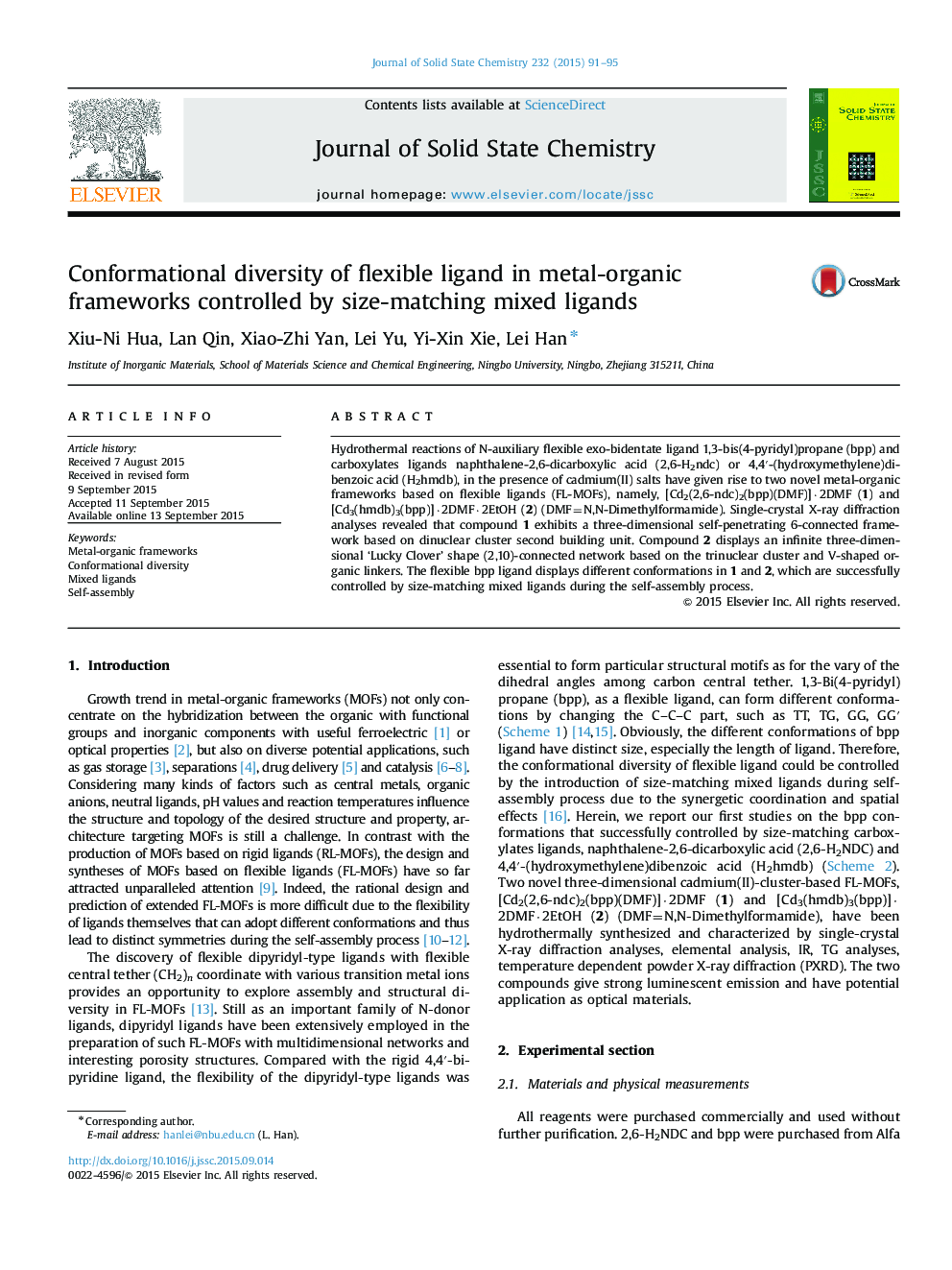| Article ID | Journal | Published Year | Pages | File Type |
|---|---|---|---|---|
| 1329440 | Journal of Solid State Chemistry | 2015 | 5 Pages |
Hydrothermal reactions of N-auxiliary flexible exo-bidentate ligand 1,3-bis(4-pyridyl)propane (bpp) and carboxylates ligands naphthalene-2,6-dicarboxylic acid (2,6-H2ndc) or 4,4′-(hydroxymethylene)dibenzoic acid (H2hmdb), in the presence of cadmium(II) salts have given rise to two novel metal-organic frameworks based on flexible ligands (FL-MOFs), namely, [Cd2(2,6-ndc)2(bpp)(DMF)]·2DMF (1) and [Cd3(hmdb)3(bpp)]·2DMF·2EtOH (2) (DMF=N,N-Dimethylformamide). Single-crystal X-ray diffraction analyses revealed that compound 1 exhibits a three-dimensional self-penetrating 6-connected framework based on dinuclear cluster second building unit. Compound 2 displays an infinite three-dimensional ‘Lucky Clover’ shape (2,10)-connected network based on the trinuclear cluster and V-shaped organic linkers. The flexible bpp ligand displays different conformations in 1 and 2, which are successfully controlled by size-matching mixed ligands during the self-assembly process.
Graphical abstractCompound 1 exhibits a 3D self-penetrating 6-connected framework based on dinuclear cluster, and 2 displays an infinite 3D ‘Lucky Clover’ shape (2,10)-connected network based on the trinuclear cluster. The flexible 1,3-bis(4-pyridyl)propane ligand displays different conformations in 1 and 2, which successfully controlled by size-matching mixed ligands during the self-assembly process.Figure optionsDownload full-size imageDownload as PowerPoint slide
